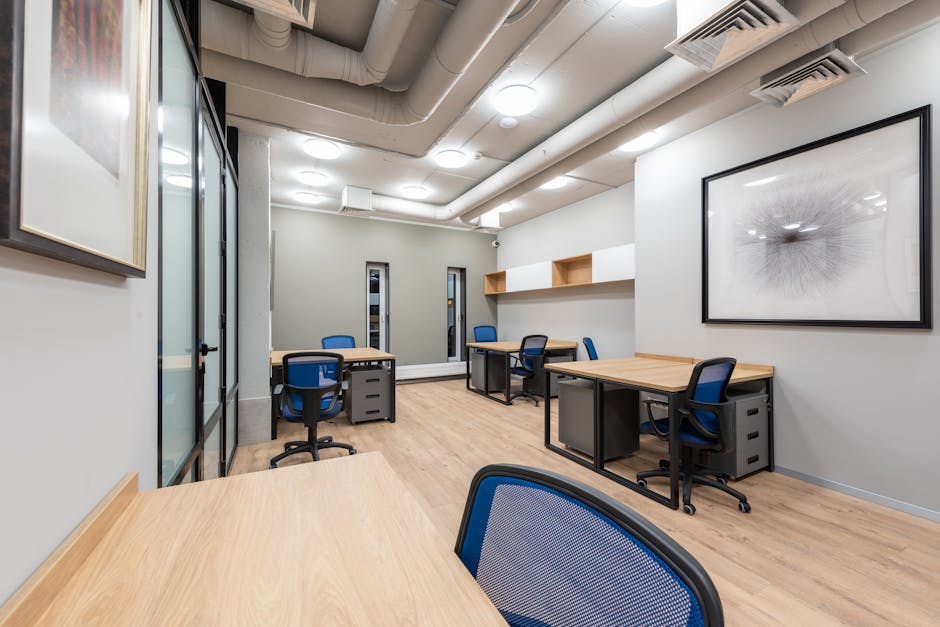Mastering Hot Desk Policies: 5 Key Strategies for Workplace Success
“This article explores five essential strategies for implementing an effective hot desk policy. From promoting flexibility to leveraging technology, learn how to overcome common challenges and create a dynamic, efficient workspace that meets the needs of today's workforce. ”

Mastering Hot Desk Policies: 5 Key Strategies for Workplace Success
In today's rapidly evolving work environment, organizations are constantly seeking ways to optimize their office spaces and enhance employee productivity. One approach that has gained significant traction is the implementation of hot desk policies. While the concept promises increased flexibility and collaboration, many companies struggle to execute it effectively. This article explores five key strategies to help you master your hot desk policy and create a thriving, dynamic workplace.

1. Promote Movement and Flexibility
One of the primary goals of a hot desk policy is to encourage movement and flexibility within the office. However, many employees tend to fall into desk-bound behaviors, negating the benefits of this approach.
How to implement:
- Strategically place amenities: Centralize common-use items like printers and water coolers to naturally encourage movement throughout the day.
- Design activity-based workspaces: Create distinct areas for different tasks, such as quiet zones for focused work and collaborative spaces for team projects.
- Educate employees: Conduct workshops on the benefits of movement and provide guidelines on how to effectively use different spaces within the office.
By fostering a culture of movement, you'll not only enhance the effectiveness of your hot desk policy but also promote better health and productivity among your workforce.
2. Establish a Clear Clean Desk Policy
Personal belongings left on desks can create confusion and discourage others from using available spaces. A clean desk policy is crucial for the success of any hot desking arrangement.
How to implement:
- Set clear guidelines: Develop and communicate a straightforward clean desk policy that outlines expectations for end-of-day cleanup.
- Provide adequate storage: Ensure employees have access to personal lockers or storage boxes for their belongings.
- Regular reminders: Use digital signage or email reminders to reinforce the importance of maintaining clean workspaces.
A well-executed clean desk policy not only supports hot desking but also contributes to a more organized and professional office environment.

3. Leverage Technology for Efficient Management
Attempting to manage hot desking manually can lead to confusion, conflicts, and dissatisfaction among employees. Embracing technology is key to streamlining the process and ensuring fairness.
How to implement:
- Implement a desk booking system: Utilize a user-friendly platform that allows employees to reserve desks in advance.
- Provide real-time availability information: Use digital displays or mobile apps to show which desks are available at any given time.
- Collect and analyze usage data: Use the insights gathered from your booking system to optimize your office layout and policies.
By leveraging technology, you can create a more equitable and efficient hot desking experience for all employees.
4. Enhance Visibility and Wayfinding
In larger offices, poor visibility can lead to wasted time as employees search for available workspaces. Improving wayfinding is crucial for maximizing the benefits of hot desking.
How to implement:
- Create interactive floor maps: Develop digital maps that show real-time desk availability and office layout.
- Use clear signage: Implement consistent, easy-to-understand signage throughout the office to help employees navigate different zones.
- Offer virtual tours: Provide new employees or visitors with virtual office tours to familiarize them with the layout and available amenities.
Enhancing visibility not only saves time but also encourages employees to explore and utilize different areas of the office, fostering a more dynamic work environment.
5. Address No-Shows and Optimize Space Utilization
No-shows can significantly impact the efficiency of a hot desk system, leading to underutilized spaces and frustrated employees.
How to implement:
- Implement check-in/check-out procedures: Use QR codes or mobile apps for employees to confirm their presence at a reserved desk.
- Set time limits: Establish a policy where reservations are automatically canceled if an employee doesn't check in within a specified timeframe.
- Encourage responsible booking: Educate employees on the importance of canceling reservations when plans change.
By addressing no-shows, you can ensure that your office space is used efficiently and that all employees have fair access to desks when needed.

Conclusion
Implementing a successful hot desk policy requires careful planning and ongoing management. By focusing on these five key strategies – promoting movement, establishing clear policies, leveraging technology, enhancing visibility, and optimizing space utilization – you can create a flexible, efficient workspace that meets the needs of your modern workforce.
Remember, the success of your hot desk policy ultimately depends on how well it aligns with your organization's culture and your employees' needs. Regularly gather feedback and be prepared to make adjustments as necessary. With the right approach, hot desking can lead to increased collaboration, improved space efficiency, and a more dynamic work environment that benefits both employees and the organization as a whole.
By mastering these strategies, you'll be well on your way to creating an office floor plan that employees will love and a workplace that supports the evolving needs of today's workforce.